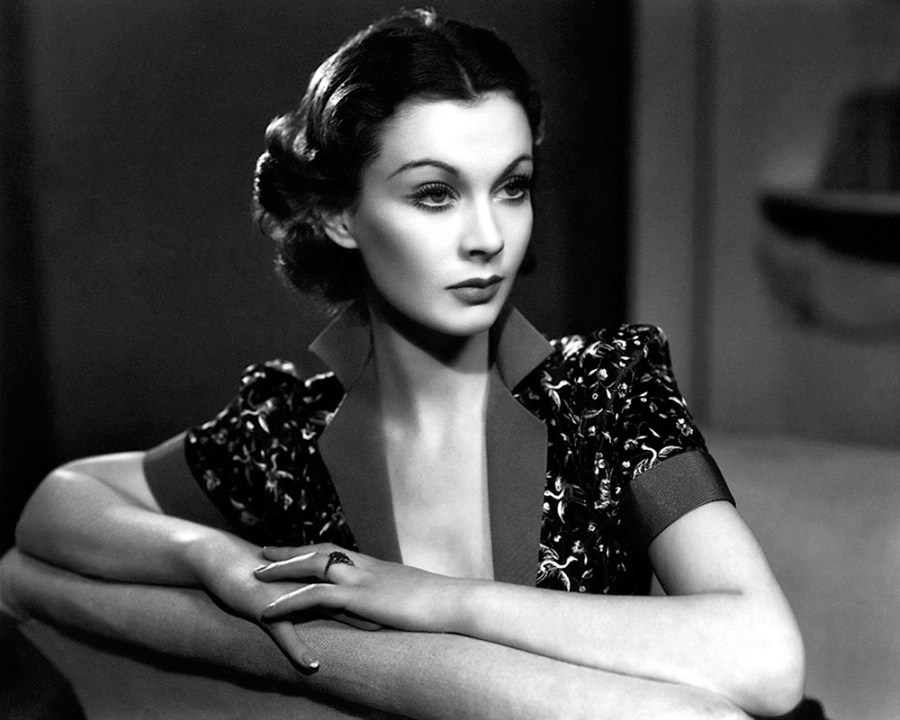‘Vivien was barking mad from the word go,’ Laurence Olivier reflected in later life, and Lyndsy Spence’s biography would fully concur with the summing-up. At best, the actress was ‘suspended in a dream world’, unable to separate herself from the classic characters she played – Scarlett O’Hara, with her dark hair and flashing eyes, or Blanche DuBois (‘she is a tragic figure and I understand her’). At her worst, Leigh was, in her own words, ‘a thing, an amoeba, at the bottom of the sea’.
Where Madness Lies is a sympathetic description of Leigh’s ‘perturbing nature’; an analysis of her numerous breakdowns, when she was in the grip of manic-depressive cycles – the high spirits and crushing melancholia, when ‘everything inside her brain was white noise’. Spence explores ‘the sensitive subject of mental illness’, using Leigh as an opportunity to look at ‘women’s health and the complexities of the female mind’.
For Leigh was certainly complex – a beauty who could become demonic, drank a lot, got puffy and turned into a total wreck; the double-Academy-Award-winning actress who had a reductive view of her performance; the harridan who drove Olivier to despair – and into the arms of (successively) Dorothy Tutin, Jean Simmons and Claire Bloom – and who then announced ‘I’d rather live a short life with Larry than face a long one without him’. She died alone in 1967, aged 53. Olivier had divorced her seven years previously.
On an aeroplane, Vivien screamed that the wing was on fire and threatened to throw herself out
Had India unhinged her? Leigh was born in Darjeeling in 1913, and (as with Jean Rhys in Dominica) something of the tropical heat, humidity and typhoid outbreaks seeped into her temperament. Flower-scented habitats, glass beads, incense, contagious fogs, tarantulas on the lawn – everything seemed in a ‘perfumed haze as heavy as a storm cloud’.
Her mother, Gertrude, was mixed-race, and when this was revealed, her husband, Ernest, who trained horses for the Indian Cavalry Corps, was drummed out of the Bengal Club, which prohibited its members from having ‘wives of a different race’. Leigh’s father’s family ran ‘a pub in Pontefract’, and there was also Catholic Irish blood. At the age of six, Leigh was sent to the Convent of the Sacred Heart in Roehampton. Here she had to undress in the dark and wear a linen shift (‘it felt like a shroud’) in the bathtub, as the body was considered sinful and to be concealed.
Little wonder that when in a manic state her sexual demands were heightened: the release of the forbidden. Leigh expected to have sex four times a day. As Peter Finch conceded: ‘After you’ve been to bed with Vivien, nothing else mattered.’ Olivier, too, was besotted, at least initially. Though she’d married a lawyer called Leigh Holman in 1932, Leigh grew restless and sent Olivier her knickers in the post. It didn’t take much to steal him away from his wife, Jill Esmond, with whom he calculated he’d only had intercourse seven times, which made him resentful of the lifelong alimony he was compelled to pay. (Jill died in 1990.)
‘I was only half alive before I met Vivien,’ said Olivier, who was soon complaining he was now more than half dead, exhausted by her demands – for a riotous social life in addition to conjugal bouts. After a performance as Viola, Lady Macbeth or Cleopatra, ‘Vivien was like an animal being released from its cage’, strong-willed and unbending. She often ‘flew into a blind rage’, was suspicious and paranoid. Previous biographies have stressed her charm and energy; this one sees mainly her impulsiveness and irresponsibility.
Moments of sanity were brief, or barely existent. On an aeroplane, she screamed that the wing was on fire, ‘threatening to throw herself out’. Making Gone With the Wind in 1939, she was found in her living room, ‘half-dead from taking four sleeping pills’, staggering around naked and collapsing over the furniture. She hallucinated that trees were women dressed in ball gowns. In Zagreb, she tore off all her clothes in a park, jumped on and off trains and made a speech at a civic reception, saying: ‘I think this is the most boring evening I have ever had in my life.’ The audience applauded politely.
When she had her affair with Finch, she kept calling him Larry, ‘pleading with him to sleep with her… He consented to her wishes’. When Finch was later in bed with his wife, Tamara, Leigh stormed in, ‘screaming obscenities at both of them’. According to Spence, Leigh indignantly asked Finch: ‘How could you be sleeping with her, you monster? You’re my lover.’ She chased Tamara with a kitchen knife; then threw herself out of the window – a gesture merely, as they were in a bungalow.
Restrained eventually by Stewart Granger and David Niven – the whole of Hollywood seemed to be witnessing the antics – Leigh was committed to Netherne Asylum and later to the Avenue Nursing Home in St John’s Wood, where she tried to bite the nurses and doctors. She was wrapped in cold, wet bedsheets, plunged into ice baths and given electroconvulsive therapy, which burnt her temples and scorched her hair, meaning she wore wigs thereafter.
None of this did any lasting good. Leigh was always ‘flitting from darkness to light and perishing in the process’, scrubbing floors (‘she was not satisfied and repeated the process’) or else hurling herself against walls ‘like a poor maddened bird’. She was replaced in Elephant Walk by Elizabeth Taylor – though she can still be seen in the long shots filmed on location in Sri Lanka. On a post-war tour of Australia, she and Olivier kept hitting each other backstage or at airports – ‘passionate display’ exacerbated by the strain of acting opposite each other. ‘I didn’t think I could keep up with him,’ Leigh confessed, alluding to the mismatch in their styles – Olivier built for old-fashioned, barn-storming theatres, Leigh better at being captured on film.
Another factor affecting her mental instability was her inability to have children with Olivier – not that she was ‘cut out for motherhood’, possessing no qualities of restfulness or serenity, let alone patience. She’d had a daughter, Suzanne, with Holman, in 1933, but ‘she felt hopeless when Suzanne cried… and was at a loss to comfort her’, and often forgot her birthday. The later number of miscarriages and stillbirths, nevertheless, was traumatic. Leigh had a maternity wardrobe designed by Balmain standing by. It was a sign of her deep disturbance that she’d rip up photos of other people’s children, should she find them.
So she’d be sobbing, chain-smoking and wringing her hands. Despite creating the role of the young actress in Terence Rattigan’s play The Sleeping Prince, Leigh was overlooked for it in the film version, The Prince and the Showgirl, Olivier preferring to cast Marilyn Monroe, whom he later chivalrously called ‘a spoilt, contaminated fat slug’. Olivier could find no role for his wife in The Entertainer, when he began his relationship with Joan Plowright – a Toby Jug to Leigh’s Dresden Shepherdess, but Olivier’s solace after years of tempestuousness.
It is very sad to read that ‘the longer Larry stayed away, the more Leigh believed he would return to her’. After the couple divorced, Leigh succumbed to pleurisy and chronic pulmonary tuberculosis, which weakened her voice and left her short of breath. She had a partner of sorts, Jack Merivale, whom she treated as her butler, and still expected to be addressed formally as Lady Olivier. She never fulfilled her promise to retire to Corfu and paint landscapes. ‘If ever there was a flawed masterpiece, it was Vivien,’ said Finch.
Spence’s biography is powerful and illuminating. It also confirms my creeping suspicion that, at this distance, Leigh was a better, more intimate and instinctive performer than Olivier. He now seems very hammy, artificial and bombastic, his theatricality quite out of vogue.








Comments